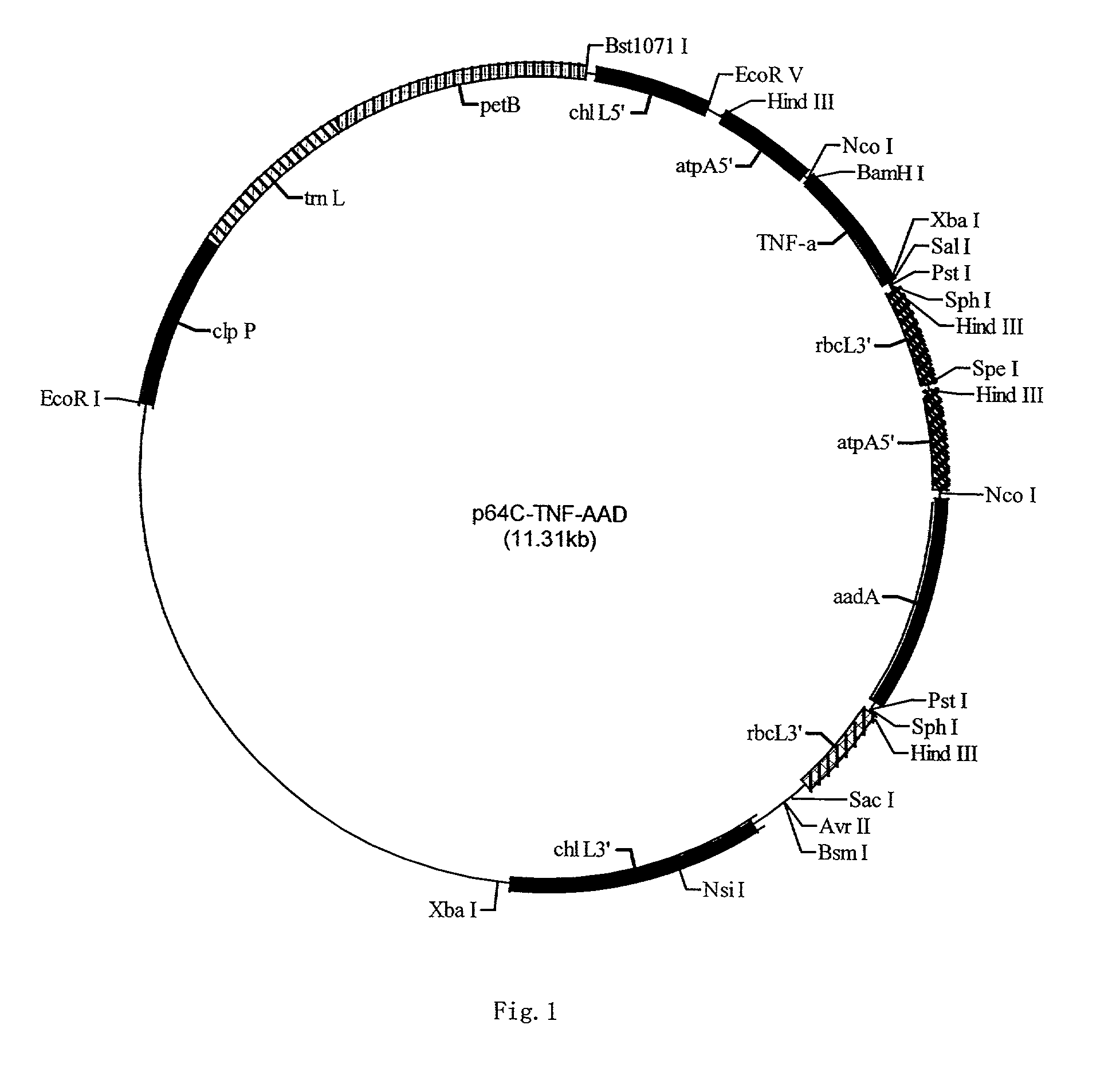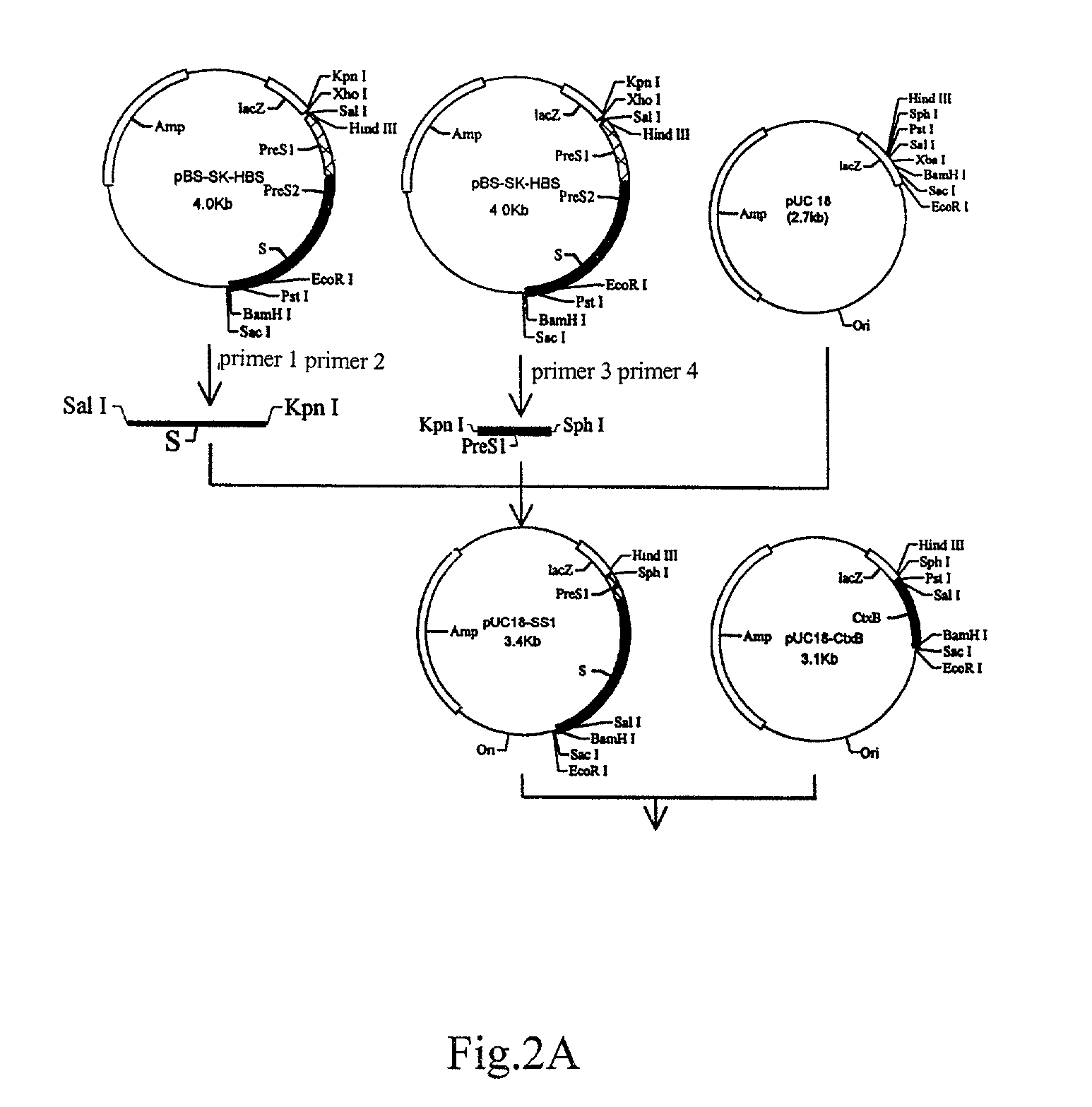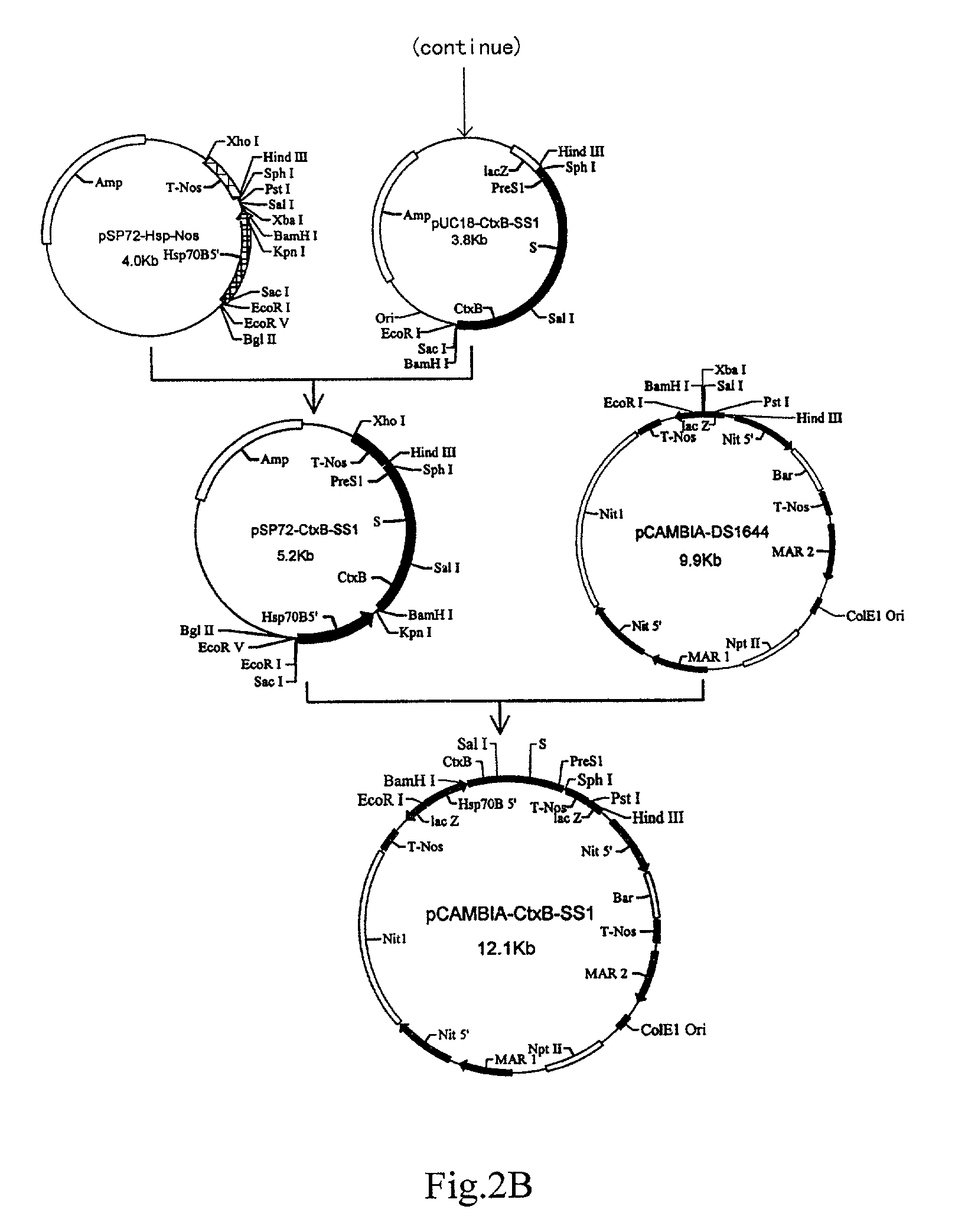Transgenic dunaliella salina as a bioreactor
a bioreactor and dunaliella technology, applied in the field of bioreactors, can solve the problems of insoluble aggregates, difficult re-dissolving, and large equipment investment, and achieve the effects of increasing the number of equipment and equipment requirements, equipment, and increasing the cost of equipmen
- Summary
- Abstract
- Description
- Claims
- Application Information
AI Technical Summary
Benefits of technology
Problems solved by technology
Method used
Image
Examples
example 1
I. Culture of Dunaliella Salina
[0065]The strain and culture conditions are as follows.[0066]1.Liquid culture: Dunaliella Salina UTEX1644 was obtained from The Culture Collection of Algae at The University of Texas at Austin, and inoculated into Mclachlan culture fluid. In liquid culture, the cells of Dunaliella Salina UTEX1644 were cultured at temperature of 20–30° C. in the flasks and under 14:10-hour light-dark cycle with 3000 lux.[0067]2. Solid culture: Agar was added into Mclachlan culture fluid up to 0.5–0.8% to prepare solid media. The alga cells being isolated from the liquid culture were transferred immediately onto the solid media prepared above by use of aseptic technique, and then cultured under the same conditions as liquid culture.
II. Construction of the chloroplast expression vector p64C-TNF-AAD of TNF[0068]1. The Vector pSK-atpX contains cloned chloroplast atpA 5′ promoter sequence and rbcL 3′ terminator sequence. Therefore, the said inserted foreign gene can be expre...
example 2
I. Dunaliella Salina Culture
[0081]The same culture used as described in example 1.
II. Construction of the Dunaliella Salina Expression Plasmid pCAMBIA-CtxB-SS1 encoding recombinant HbsAg (FIG. 2).
[0082]1. Construction of the Recombinant HBsAg SS1 Fusion Gene
[0083]Plasmid pBS-SK-HBS contained sequences of S, Pre-S2 and Pre-S1 genes of hepatitis B virus. Four primers for amplification of the genes listed above were designed as follows:
[0084]
Primer 1:5′-GCAGTCGACCCAATG GAGAGCAC-3′; Sal IPrimer 2:5′-GCGGGTACCAGG AATGTATACCC-3′; Kpn IPrimer 3:5′-CTGGGTACCCCA AATCCTCTGGG-3′; Kpn IPrimer 4:5′-GCGGCATGCTTA GTTGGGGTTG-3′; Sph I
[0085]The S gene fragment encoding 1–226 amino residues of HBsAg and the PreS1 gene fragment encoding 20–48 amino residues of PreS1Ag were amplified using primers 1 and 2, and primers 3 and 4, respectively. After restriction enzyme digestion and recovery, the two fragments were ligated at the Sal I / Sph I site in the plasmid pUC18 to construct a...
PUM
| Property | Measurement | Unit |
|---|---|---|
| Electrical resistance | aaaaa | aaaaa |
Abstract
Description
Claims
Application Information
 Login to View More
Login to View More - R&D
- Intellectual Property
- Life Sciences
- Materials
- Tech Scout
- Unparalleled Data Quality
- Higher Quality Content
- 60% Fewer Hallucinations
Browse by: Latest US Patents, China's latest patents, Technical Efficacy Thesaurus, Application Domain, Technology Topic, Popular Technical Reports.
© 2025 PatSnap. All rights reserved.Legal|Privacy policy|Modern Slavery Act Transparency Statement|Sitemap|About US| Contact US: help@patsnap.com



